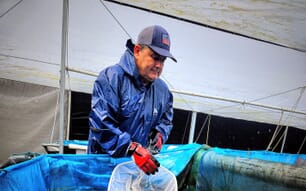The commitment was secured from PT Renaissance Capital Asia and PT Recapital Advisors, PPA chairman Mohammad Syahrial said on Thursday. PPA is the state agency tasked with managing and supervising assets formerly belonging to deeply indebted businesses that were taken over by the state.
Syahrial said that the agency had on Sept. 23 named the two financing firms as Dipasena's preferred creditor, over Transagro Investment, PT Laranda Powerindo and Fortune Alliance Investments.
In the deal, Renaissance and Recapital will provide a total of $150 million for Dipasena's working capital, and some Rp 900 billion ($90 million) in loans for the company's shrimp farmers.
Dipasena operates under what is known as a "core-plasma" scheme, in which the company acts as a nucleus providing loans to shrimp farmers, but in return the farmers are required to sell their produce to the company.
"We chose Renaissance and Recapital's proposal over the others as they were the only ones willing to provide credit for the farmers, and had better value-added prospects at the end of their debt-to-equity option within two years," Syahrial explained.
"They also agreed that the government may retain control of Dipasena's management board, and committed that they will not sell Dipasena back to its previous owner."
The government took over Dipasena from Gajah Tunggal Group tycoon Sjamsul Nursalim to partly settle his Rp 28 trillion debt to the state following the 1997 Asian financial crisis.
Controversy surfaced as Dipasena's assets turned out to be very low, resulting in the government failing to sell the company to investors at a premium price, while Sjamsul allegedly tried to buy it back at a fire-sale price.
At its peak in 1996, Dipasena could produce an annual $167 million worth of shrimp, which was mostly exported to Japan, the U.S. and Europe, from its 186,000 hectares of shrimp ponds. Its production now amounts to only $40 million a year; approximately 30 percent of its maximum capacity.
Source: The Jakarta Post - 3rd October 2005


